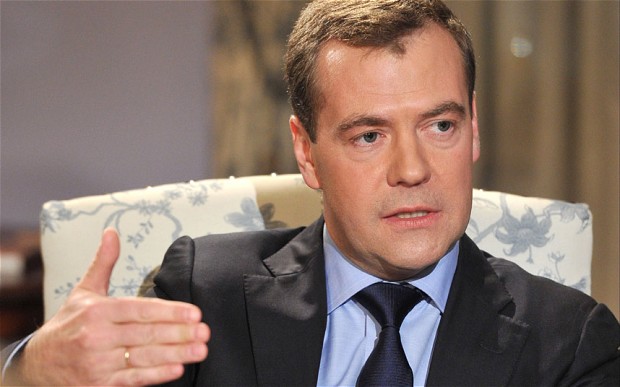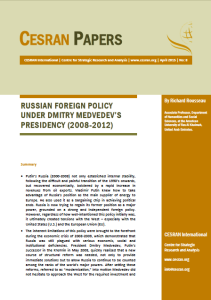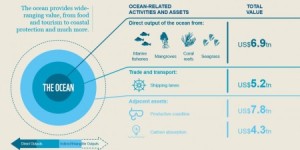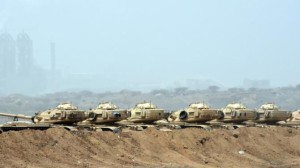
Summary
- Putin’s Russia (2000-2008) not only established internal stability, following the difficult and painful transition of the 1990’s onwards, but recovered economically, bolstered by a rapid increase in revenues from oil exports. Vladimir Putin knew how to take advantage of Russia’s position as the main supplier of energy to Europe. He also used it as a bargaining chip in achieving political ends. Russia is now trying to regain its former position as a major power, grounded on a strong and independent foreign policy. However, regardless of how well-intentioned this policy initially was, it ultimately created tensions with the West – especially with the United States (U.S.) and the European Union (EU).
- The inherent limitations of this policy were brought to the forefront during the economic crisis of 2008-2009, which demonstrated that Russia was still plagued with serious economic, social and institutional deficiencies. President Dmitry Medvedev, Putin’s successor in the Kremlin in May 2008, quickly realized that a new course of structural reform was needed, not only to provide immediate solutions but to allow Russia to continue to be counted among the ranks of the world’s major powers. After setting these reforms, referred to as “modernization,” into motion Medvedev did not hesitate to approach the West for the required investment and technology transfer so desperately needed in many spheres of the Russian economy. These initiatives coincided with the election of Barack Obama as president of the United States. Obama first came across as less inclined towards unilateralism than his predecessor, George W. Bush, and responded positively to the Russian shift in attitude. This was demonstrated when former U.S. Secretary of State Hillary Clinton and Russian Foreign Minister Lavrov symbolically pressed the “reset button,” a highly-publicized event designed to turn a new page in the ledger of relations between Washington and Moscow.
- Medvedev’s Russia also recognized that the EU should be another major partner in its drive towards modernization, as reflected by the Modernization Partnership launched at the Stockholm Summit in November 2009. But the limits of the new approach to the relations between Russia and the West were palpable in a series of crucial issues: The lack of progress in negotiating a new Partnership and Cooperation Agreement between the EU and Russia (as a replacement of the 1997 agreement);1 Russia’s accession to the World Trade Organization (WTO), achieved only at the end of 2011; Russia’s continued pursuance of establishing a new European security architecture focused only on military issues (or hard power), which reflects Russia’s desire to maintain an exclusive sphere of influence in the post-Soviet space.
- The war between Russia and Georgia in August 2008 over the breakaway Georgian regions of South Ossetia and Abkhazia, and the stated intentions of the Georgian and Ukrainian governments to join the North Atlantic Treaty Organization (NATO), raised the bar in the already heightened tensions between Russia and Western countries to its highest point since the Cold War.
- Russia under Medvedev actively sought to establish a special relationship with China, its historical Asian rival. Russia is aware of the substantial benefits that could be derived from closer economic cooperation with this rapidly developing neighbour. At the same time, Russia is also confronted by the strategic challenge of dealing with a country that has become a major world power. Relations – both political and economic – between Moscow and Beijing during Medvedev’s presidential term can be best described as good and business-like. However, Medvedev was unsuccessful in establishing a public dialogue with China on major global issues.
- Relations between Moscow and Tokyo were tense due to Russia’s ongoing claim to the disputed Sakhalin Islands, captured from Japan at the end of World War II. Nevertheless, Japan remains a major investor in Russia.
- Between 2008 and 2012, Russia paid more attention to other emerging powers like Brazil and India (and BRICS members),2 seeking better ways to coordinate shared policies on global economic governance. Russian-Indian relations have historically been robust, and India is today a major consumer of one of Russia’s chief exports – cheap, yet competitively priced arms and weapons systems. Moscow also began to refocus on Latin America, both for geopolitical (as it is located in the “U.S.’s backyard”) and economic reasons, especially those connected with energy. Although only modest results have been achieved in respect to Russia’s relations with Brazil and India, two regional and economic powerhouses, it is possible that these countries may effectively coordinate their positions at some point, especially in dealing with some of most important and pressing aspects of international economic relations.
INTRODUCTION
 Following the inauguration of Russian President Dmitry Medvedev in May 2008, the Russian political scene was characterized by a new structure: the country was governed by a bicephalous system (which reflected the two-headed eagle of the national flag). Medvedev became President and Vladimir Putin assumed the position of Prime Minister. In this ostensibly tandem structure, the Chief Executive was subordinated to the President as was the case even before Russia first emerged as an independent country in the wake of the collapse of the Soviet Union.
Following the inauguration of Russian President Dmitry Medvedev in May 2008, the Russian political scene was characterized by a new structure: the country was governed by a bicephalous system (which reflected the two-headed eagle of the national flag). Medvedev became President and Vladimir Putin assumed the position of Prime Minister. In this ostensibly tandem structure, the Chief Executive was subordinated to the President as was the case even before Russia first emerged as an independent country in the wake of the collapse of the Soviet Union.
Such a dual power sharing worked quite well during Medvedev’s term and with no serious fissures that could bring about competing circles of power around each of the heads of state. This was true even though the personalities of the two leaders were very different. Their priorities, however, seemed different, at least formally.
During his presidency (2000-2008), Putin made every effort to recover Russia’s super power status and international respect. He did not hesitate to use the privileged position of Russia – main energy supplier to Europe, a permanent member of the Security Council of the United Nations, a continuing influence over the post-Soviet space – to achieve his ambitious goal. For his part, Medvedev preferred to use foreign policy as an instrument to advance the process of economic modernization, while keeping Russian national interests in mind. When compared to Russia’s main partners and competitors, Medvedev was very much aware of the systemic disadvantages his country faced. These disadvantages, according to him, were factors that considerably weakened Russia as a major world power and economic player.
The foundation of Putin’s domestic and foreign policy was the concept of “sovereign democracy,” which argues that Russia must follow its own democratization process. There was no need to emulate and copy Western models. In this view, if Russia’s political system had serious flaws, the same could be said of the political systems of Western countries. The West was no longer seen as being in a position to give lessons to Russia. Consequently, Russian foreign policy at the time gradually abandoned or even opposed some of the positions taken by Western countries. Such a tendency began with Putin’s speech at the annual Wehrkunde conference held in Munich in January 2007.
Within a year serious tensions arose between Russia and their Western allies, for instance with the August 2008 armed conflict between Georgia and Russia. The origin of this conflict was the longstanding secession attempts by South Ossetia and Abkhazia, two territories recognized as being part of Georgia.
Especially glaring were Russia’s disagreements and confrontations with the U.S. over such issues as NATO expansion, European-based missile defense systems and U.S. attempts to expand its influence into what Russia considers its “near abroad”, the post-Soviet space. Under Putin, Russia once again seemed to be a rival of the West, not merely on an ideological basis as during the Cold War, but because of its own strong nationalistic tendencies.
Medvedev, however, decided to take a different track. The great economic crisis of 2008-2009 somberly exposed Russia’s serious limitations, especially in the economic sphere. The young President, although trying to maintain an independent foreign policy, recognized that for Russia to become a great power again matching not only the “big” U.S. and Western powers but also major emerging economies such as China, Brazil and India, it has to “modernize” in broader terms. Not only does it have to upgrade its infrastructure, diversify the economy and expand its base of technology, but it needs to make progress at the institutional level. This means that Russia needs to make greater efforts at democratization and reduce endemic problems such as corruption and excessive bureaucracy.3
…
To Read the rest of the article Please Click Here for Free Download




